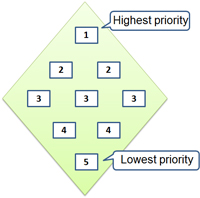Anatomy of Child Bullying in Japan
- 1. Definition of Bullying and its Transformation
- 2. Bullying in Different Cultures - Differences and Similarities in Bullying Between Countries
- 3. Bullying and the Relation to Teacher Leadership
- 4. Bullying Prevention (1): Preventing Bullying Caused by "Negative Conformity"
- 5. Bullying Prevention (2): Preventing the Escalation of Bullying by Recognizing Children's SOS Signs
- 6. Bullying Prevention (3): How to Interpret the Anti-Bullying Act
- 7. Bullying Prevention (4): What Should We Expect from Bullying Prevention Programs?
- 8. Bullying Prevention (5): Bullying Prevention Program by the Tokyo Metropolitan Government (This article)
- 9. What Does the Number of Bullying Reports Imply? An Analytical Study Based on Data from across Japan
- 10. Anatomy of Child Bullying in Japan 10: Effects of the broader definition of bullying
The NPO Tokyo Gakugei University Children Institute for the Future (chairperson: Professor Keiji Matsuda at Tokyo Gakugei University) has been working together with the Tokyo Metropolitan Government on the bullying prevention program proposed by the government from the end of 2013 until February 2014. The institute has, upon entrustment, materialized the program content and teaching materials, conducted pilot classes by teachers, verified the effects, and modified the program content and teaching materials. I myself participated, as one of the directors, in the verification and analysis of the outcomes of the program. In this session, therefore, I will introduce the outline of the pilot classes, with permission of the institute and the Tokyo Metropolitan Government. Since I cannot provide complete information of the program here, for further information, please visit the Tokyo Metropolitan Government's webpage "Formulation of the Bullying Prevention Education Program in order to develop the ability to handle bullying issues." (Only available in Japanese.)
This program consists of four sessions under the following four themes: (1) Creating an environment that will never ignore bullying (create a joyful classroom free of bullying); (2) Understanding each other's differences in order to prevent bullying (discover your individuality and that of others); (3) Establishing favorable human relationships that will never allow bullying (enhance communication skills); and (4) Controlling emotions in order to stop bullying (control your emotions effectively).
Session (1) aims to promote the understanding of bullying in order to prevent bullies and victims who do not realize their bullying/bullied situation.
Session (2) aims to develop a positive sense of one's individuality and that of others and raise awareness that no one ever deserves to be bullied.
Session (3) aims to enhance the understanding of and empathy for different others in order to prevent bullying that tends to target and exclude people with differences.
Session (4) aims to improve the ability to control negative emotions towards others in order to prevent bullying behavior.
We created a four-time pilot class program according to children's ages and development stages. To be more precise, we developed six types of classes for students in early, middle and late elementary grades, junior high school students, senior high school students and special-needs students. In addition, we arranged these four sessions for two different lengths of time: 45-50 minutes and 10 minutes, resulting in 48 patterns (4 sessions x 6 types x 2 different time lengths) in total. Together with the NPO researchers, we spent an enormous amount of time and effort working on these sessions.
In January and February 2014, we intensively implemented the pilot program at elementary, junior high and high schools as well as special-needs schools in the metropolitan area with support from these schools and teachers.
Next, I will explain specific lesson plans of each session.
Outline of the Bullying Prevention Program
(1) "Creating of an environment that will never ignore bullying (create a joyful classroom free of bullying)"
In sessions for lower elementary grade students, the teacher first asks the students to think about the "good points of their class." Then, the teacher shows them illustrations of various bullying behavior (such as teasing, mocking, baiting and physical attacks) and asks them how they feel about this behavior. The teacher also asks them to think about what they can do to create a joyful classroom free of bullying, including factors that create a joyful classroom or an unhappy classroom. The teacher draws a house titled "Joyful Classroom" on the blackboard, and then writes down the factors that would create a joyful classroom inside the house and the factors that would lead to an unhappy classroom outside the house. Lastly, the teacher confirms with the students that bullying is the act of hurting someone mentally and physically and that they should never bully, allow someone to bully, or ignore bullying behavior. In the sessions for junior high school students and above, the students are taught that bullying is considered a criminal offense under the penal code in various aspects.
(2) "Understanding each other's differences in order to prevent bullying (discover your individuality and that of others)"
In sessions for lower elementary grade students, on the topic "Let's discover your good points," the teacher first asks the students to write down their positive points and accomplishments on a worksheet. The students are then divided into groups of four, and each is asked to write down the positive points of the other three group members on a card. The students exchange the cards with each other and share positive feelings about their peers, recognizing their good points. For children in the early elementary grades who have not yet developed a concept of the self, it is easier to make them understand their "good points" than their "individuality." In sessions for junior high school students and above, students discuss their good points as well as their bad points, and how to turn a negative point into a positive one.
(3) "Establishing favorable human relationships that will never allow bullying (enhance communication skills)"
The students are asked to form pairs and to take either the role of the "speaker" or "listener." The speaker talks about the topic decided in advance according to the particular class (for example, recess activities). The listener listens to the speaker, using "good listening skills" that are taught in advance such as nodding or smiling while listening without talking about him/herself. When the speaker finishes, they switch roles. After that, the pair then joins another pair to make a group of four, where they report what they have just heard to new group members. Each speech is limited to about three minutes. Participants then discuss how they felt hearing others' stories within the group. Lastly, the head of the group gives a presentation to the entire class.

In the sessions for junior high school students and above, the students are asked to decide on a topic related to school activities (such as a choral competition) and discuss it in groups in an activity called the "Diamond 9 Ranking," where they decide and discuss their priorities. The Diamond 9 Ranking is so named because the students are instructed to place the statement with the highest priority at the top of the formation and the least important factor at the bottom; the second and fourth rows consist of two factors of the second and fourth priorities, and the middle row consists of three factors of third priorities, forming a diamond shape. In the case of a choral competition, priorities to be determined are the amount of training, solidarity, a sense of responsibility, making it a memorable event, efforts, etc. In discussions, the students are required to voice their opinions as well as listen to others'. Making them learn how to respect each other's opinions will prevent them from just superficially agreeing with others.
(4) "Controlling emotions in order to stop bullying (control your emotions effectively)"
Considering the nature of the session, it is desirable to conduct the session with a school counselor. In this session, the students are asked to reflect on situations where they couldn't handle their irritation and frustration and what they did in such situations. Then, the teacher asks them to describe the irritating situations. The teacher explains that everyone has occasions when he/she feels irritated or frustrated and that they should learn how to manage frustration in their own way, a result that leads to better relationships with others. The teacher shows some methods to manage frustration (taking a few deep breaths, outdoor physical activity, sharing the problem with adults, positive self-talk such as telling oneself to "stay calm," singing a favorite song, and relaxing in nature, etc.) and asks the students to select and practice the method. The teacher also tells the students that they can consult their teacher whenever they need help. In the sessions for upper elementary grade students and above, the teacher asks them to find out their own stress management method.
In the sessions for junior high school students, the teacher introduces some situations where interpersonal conflict is likely and asks the students to conduct a role-playing exercise, for example, taking the roles of classmates A and B who quarreled, considering their feelings and expectations. The students at this age often feel embarrassed and do not concentrate on the role-playing: therefore, the teacher should contrive ways to help them focus on their tasks. This session has proved to be effective based on the effectiveness measurement results. Many students commented "I realized that being a friend does not mean you can say or do anything you want to."
In the sessions for high school students, the fundamentals of stress management are explained. It is also desirable to use the DVD "STOP Bullying! Are you Aware?" produced by the Tokyo Metropolitan Government in class (high school student version (15 min.)). The DVD describes cyber bullying as well and has proved to be quite effective for students. Some say that students should be taught about cyber bullying in the first semester where cyber bullying tends to occur among students who are just acquainted with each other.
Verification of effects reveals that each session has produced significant effects as expected. We also collected feedback from teachers, students and supervising teachers who participated in the pilot classes, which have been reflected in the final draft of the program. We hope you find it informative.



 Dr. Sugimori is Professor of Social Psychology at Tokyo Gakugei University, conducting research on group psychology (evaluation of team working, psychology in the citizen judge system, and effects of experiential activities) as well as risk psychology, from the standpoint of cultural social psychology focusing on social relations between individuals and groups. He also serves as Board Member of the Japanese Society for Law and Psychology; Executive Board Member of the Society for Field-Culture Education; Board Member of the Youth Friendship Association; Councilor of the Outward Bound Japan; Board Member of the Children Institute for the Future, Tokyo Gakugei University; Chairman of the Accreditation Committee, Japan Association for Certifying and Training Educational Specialists.
Dr. Sugimori is Professor of Social Psychology at Tokyo Gakugei University, conducting research on group psychology (evaluation of team working, psychology in the citizen judge system, and effects of experiential activities) as well as risk psychology, from the standpoint of cultural social psychology focusing on social relations between individuals and groups. He also serves as Board Member of the Japanese Society for Law and Psychology; Executive Board Member of the Society for Field-Culture Education; Board Member of the Youth Friendship Association; Councilor of the Outward Bound Japan; Board Member of the Children Institute for the Future, Tokyo Gakugei University; Chairman of the Accreditation Committee, Japan Association for Certifying and Training Educational Specialists.










